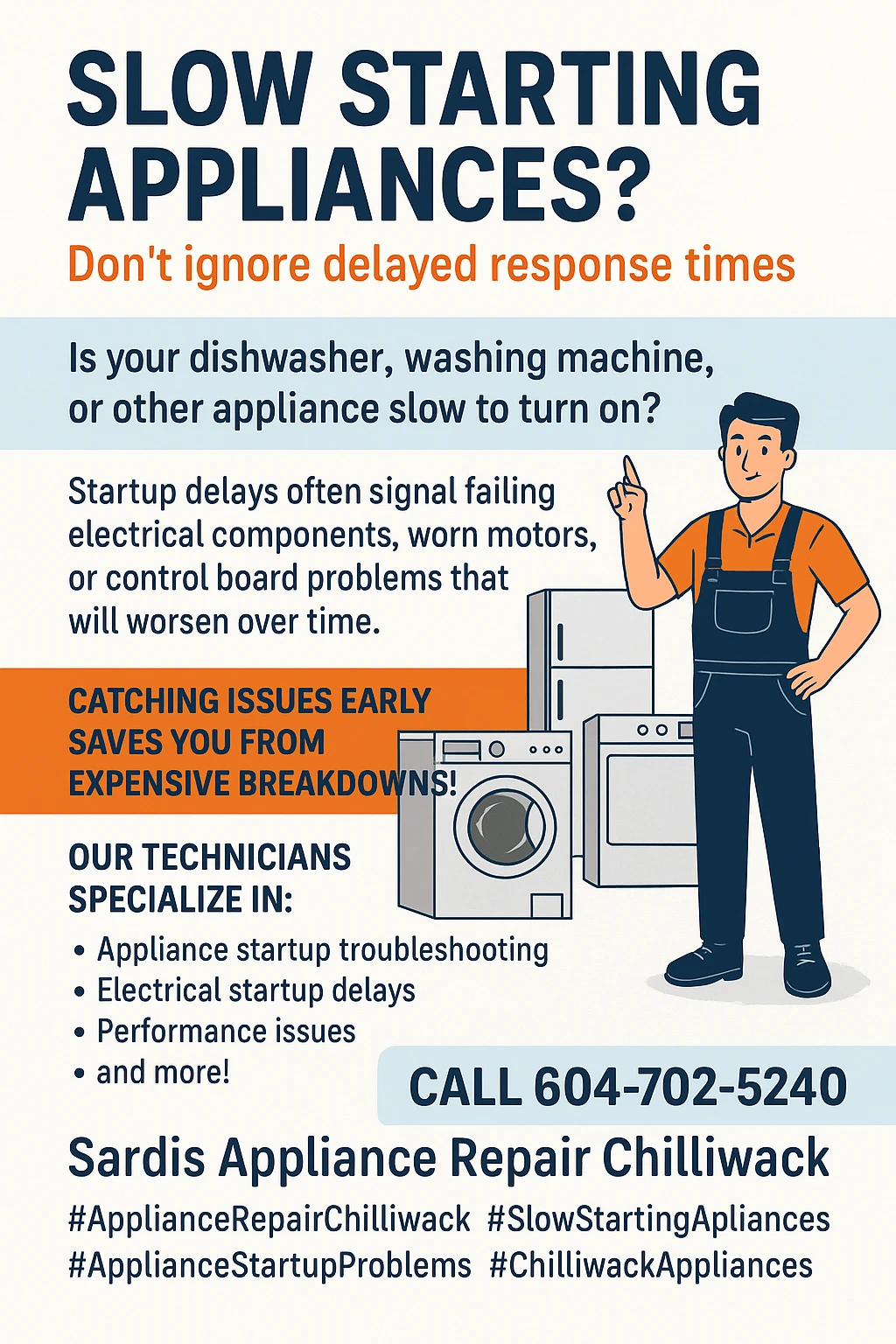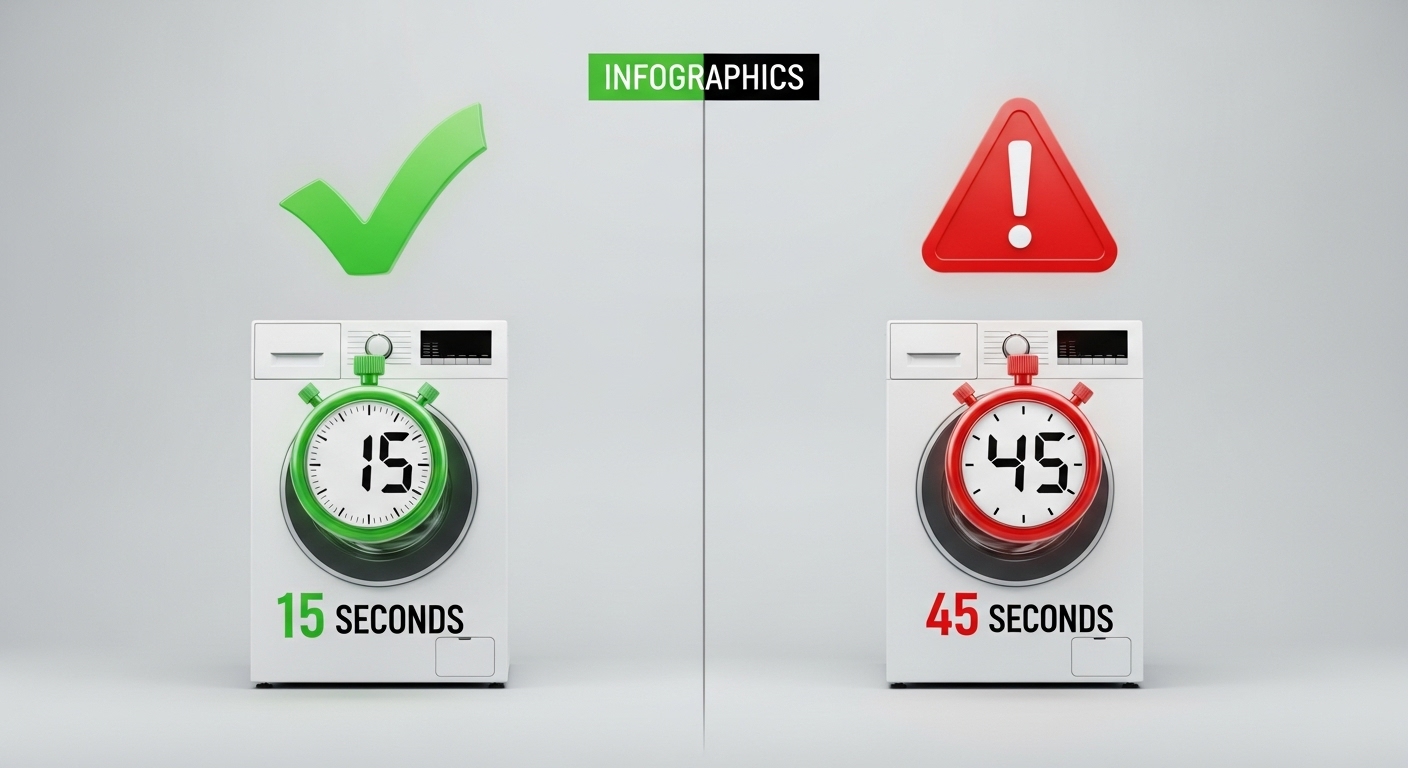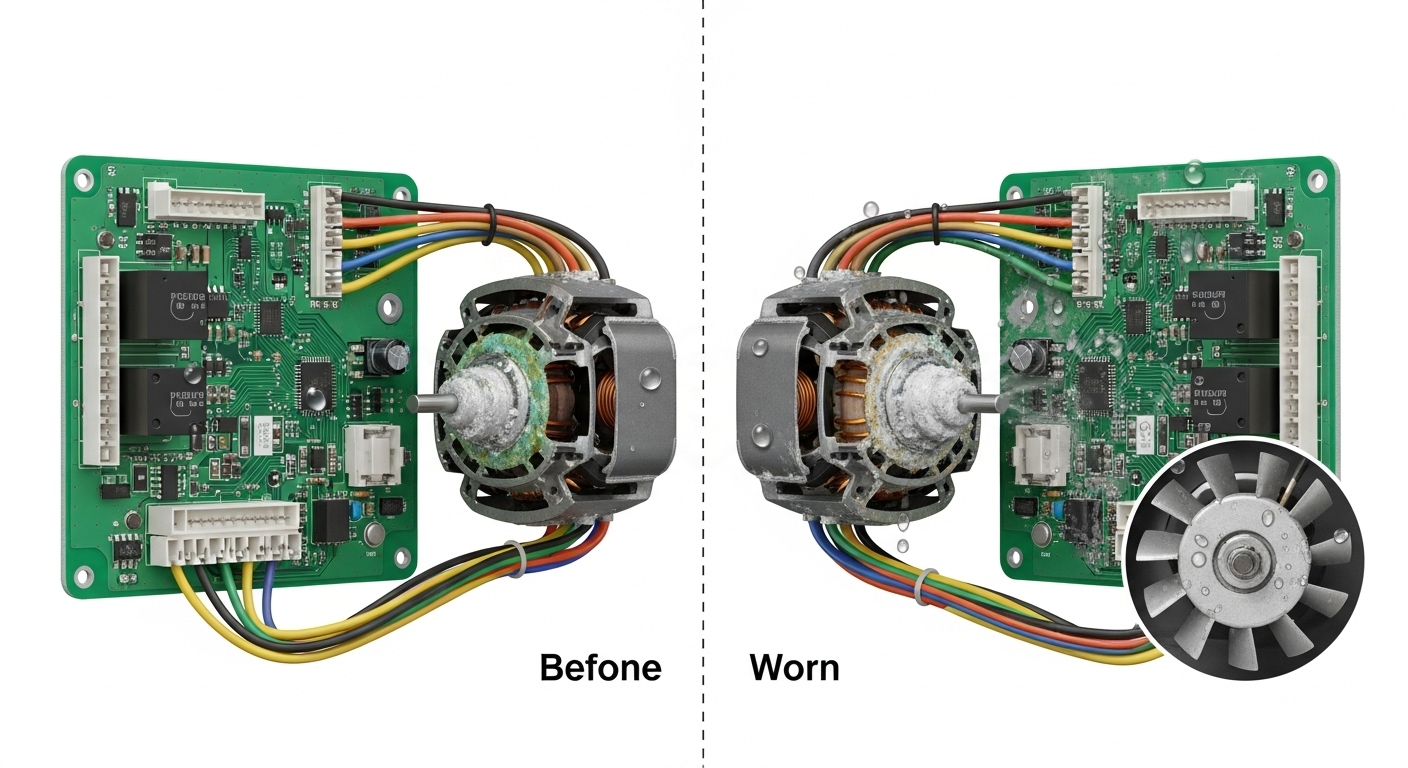Staring at your trusty refrigerator that’s taking an eternity to kick into its cooling cycle, or maybe your washing machine that seems to need a full minute just to acknowledge you’ve pressed the start button? Don’t brush off these sluggish startup times as normal wear and tear – they’re often your appliances’ way of crying for help before they hit you with a repair bill that’ll make your wallet weep! 
Picture this: you’re rushing to get dinner prepped when you realize your dishwasher is sitting there like it’s having an existential crisis instead of starting its wash cycle. Or maybe your dryer decides to take a leisurely coffee break before responding to your desperate attempts to get that load of work clothes ready for tomorrow. These aren’t just minor inconveniences that come with appliance aging – they’re actually early warning signals that something significant is brewing under the surface.
What makes this particularly frustrating for Chilliwack homeowners is how our coastal climate seems to accelerate these startup issues. The Fraser Valley’s unique combination of humidity, temperature swings, and seasonal changes creates the perfect storm for appliance stress. When your machines start responding slower than a teenager asked to do chores, it’s usually because internal components are struggling against conditions they weren’t originally designed to handle long-term.
Understanding the difference between normal startup delays and symptoms of impending expensive failures can literally save you hundreds or even thousands of dollars in emergency repairs. The good news? Most of these warning signs are totally recognizable once you know what to listen and look for, and catching them early often means turning a potential $800 compressor replacement into a $150 start relay fix.
- Appliances taking more than 30 seconds to start typically indicate electrical or mechanical component stress that can lead to failures costing $300-$900 to repair
- Fraser Valley’s coastal humidity accelerates component degradation, making startup delays appear 2-3 years earlier than in drier climates
- Refrigerator compressor delays often signal impending failures that cost $800-$2,000 to replace, making early intervention crucial
- Power quality issues in older Chilliwack neighborhoods can cause startup delays that progressively worsen appliance performance and lifespan
- Most startup problems under 10-year-old appliances justify repair costs, while older units with multiple startup symptoms often require replacement

Understanding Normal vs. Abnormal Appliance Startup Times

Before we dive into panic mode about every little startup hiccup, let’s establish what actually counts as normal appliance behavior versus the red flags that should have you reaching for your phone to call a repair tech. Modern appliances are basically sophisticated computers wrapped in metal boxes, and just like your laptop, they have specific boot-up sequences that should happen within predictable timeframes.
Your refrigerator should start its cooling cycle within 5-10 seconds of being plugged in or after a power outage. If you’re standing there tapping your foot for 30 seconds while waiting for that familiar hum to kick in, something’s not right. Washing machines typically respond to start commands within 15-20 seconds, including their initial water-filling phase. Dishwashers should begin their pre-wash sequence almost immediately, though some newer models have brief diagnostic checks that can add up to 10 seconds to the process.
Here’s where living in the Fraser Valley throws us a curveball that appliance manufacturers don’t always account for in their specifications. Our coastal humidity levels regularly exceed 60%, which creates conditions where metal components expand slightly and electrical connections can develop resistance over time. This means what might be considered a 15-second normal startup time in Arizona could legitimately stretch to 20-25 seconds here without indicating a problem.
The key warning sign isn’t necessarily the absolute time your appliance takes to start, but rather changes in that timing. If your dishwasher used to start immediately and now consistently takes 45 seconds to respond, that progressive delay pattern indicates developing issues. Similarly, if startup times vary wildly from day to day – sometimes starting normally, other times taking several minutes – you’re looking at intermittent component failures that will likely worsen over time.
Temperature plays a huge role in normal startup expectations, especially during our chilly Fraser Valley winters. Cold temperatures can make motor lubricants thicker, causing perfectly healthy appliances to take slightly longer to reach full operation. However, this should be a consistent seasonal pattern, not random extended delays that happen regardless of ambient temperature. Professional repair services report that many homeowners dismiss progressive startup delays as normal aging, missing the opportunity for early intervention that could prevent major component failures.
The Science Behind Delayed Appliance Response

Diving deeper into the technical side of why appliances start developing that sluggish morning personality, we need to understand that most modern appliances depend on a complex choreography of electrical and mechanical components working in perfect harmony. When this choreography starts getting out of sync, the symptoms often show up as delayed or inconsistent startup responses long before complete failure occurs.
Electrical component degradation represents the most common culprit behind progressive startup delays. Every time your appliance starts up, electrical contacts make and break connections, creating tiny sparks and heat that gradually erode contact surfaces. Over five to seven years, this normal wear can reduce electrical contact efficiency by up to 30%, meaning your appliance has to work progressively harder just to complete its basic startup sequence.
The Fraser Valley’s seasonal temperature fluctuations compound this problem significantly. During winter months when indoor heating creates dry conditions followed by spring humidity surges, appliance components experience repeated expansion and contraction cycles. These thermal stresses particularly affect solder joints, wire connections, and mechanical linkages that must maintain precise tolerances for proper operation. What starts as minor connection resistance can progressively worsen until components begin intermittent failures.
Mechanical wear patterns create their own category of startup delays, particularly in appliances with motors, pumps, or compressors. As internal components accumulate normal wear, they require progressively more power to overcome friction and reach operating speeds. This increased power demand shows up as longer startup times, especially in high-torque applications like washing machine agitators or refrigerator compressors that must overcome static loads.
Hard water conditions in many Chilliwack neighborhoods add another layer of mechanical stress through mineral buildup on heating elements, pump components, and water valves. These mineral deposits create additional resistance that motors must overcome during startup, contributing to delayed responses and increased wear on electrical components. The combination of mineral scaling and electrical degradation often creates cascading failure patterns where multiple components begin failing in sequence.
Refrigerator Startup Problems: When Slow Cooling Signals Major Issues
Refrigerator startup issues deserve special attention because they often represent the most expensive potential repairs in your appliance lineup, with compressor replacements reaching $800-$2,000 depending on your model and local service rates. Understanding the early warning signs of refrigerator startup problems can literally save you from discovering $500 worth of spoiled groceries alongside a repair bill that makes your mortgage payment look reasonable.
The refrigerator startup sequence involves a carefully orchestrated dance between several critical components: the start relay, run capacitor, overload protector, and the compressor itself. When you hear that familiar click followed by the gentle hum of the compressor starting up, you’re witnessing this entire system working in harmony. When any component in this chain begins failing, the symptoms typically show up as delayed startup, intermittent operation, or complete failure to start.
Start relay problems are among the most common and fortunately least expensive refrigerator startup issues. The start relay acts like a temporary boost system that gives the compressor extra power to overcome initial resistance and begin operating. When start relays begin failing, you’ll notice the refrigerator taking progressively longer to start after cycling off, or you might hear repeated clicking sounds as the system attempts to start but fails to sustain operation. Testing a start relay requires a multimeter and some basic electrical knowledge – a healthy relay should show 3-12 ohms resistance at room temperature.
Run capacitors represent another common failure point that creates startup delays before complete breakdown. These components store electrical energy to help maintain consistent compressor operation, and when they begin failing, the compressor struggles to reach and maintain operating speed. Capacitor problems often manifest as compressors that start, run for a few seconds, then shut off with an audible click as the overload protector trips. A simple visual inspection can often diagnose a bad capacitor – look for bulging, leaking, or burn marks on the casing. While testing capacitors requires specialized equipment, their relatively low cost (typically $20-$50) makes them a worthwhile part to replace when startup delays are accompanied by these symptoms.
Frequently Asked Questions (FAQs) About Slow-Starting Appliances
Q: Is it normal for my older appliances to take longer to start?
A: While minor increases in startup time can be part of normal aging, a sudden or progressively worsening delay of more than 30-45 seconds is a red flag. It indicates significant wear on electrical or mechanical components that could lead to an imminent and more expensive failure.
Q: Can a power surge cause my appliance to start slowly?
A: Yes, power surges or the “brownout” conditions common in some older Chilliwack neighborhoods can damage sensitive electronic components like control boards and capacitors. This damage often manifests as slow or failed startups long after the power event. A surge protector designed for large appliances is a wise investment.
Q: Why does my washing machine take so long to start filling with water?
A: This is often caused by sediment or mineral buildup in the water inlet valve screens. Over time, these screens get clogged, restricting water flow and delaying the start of the wash cycle. Cleaning these screens is a simple DIY fix that can often solve the problem without a service call.
Q: My refrigerator clicks but won’t start right away. What does that mean?
A: The clicking sound is usually the overload protector tripping because the compressor is trying to start but can’t. This is most commonly caused by a failing start relay or run capacitor. It’s a critical warning sign that needs immediate attention to avoid damaging the compressor itself.
Wrapping Up: Don’t Wait for the Silence
That quiet moment when you expect your appliance to roar to life but get nothing but silence is a homeowner’s nightmare. The sluggish startup times you might be dismissing today are the precursors to that silence tomorrow. By paying attention to these early warning signs – the extra 30 seconds your dishwasher takes to think, the repeated clicks from your fridge, the groaning start of your dryer – you empower yourself to take control. You shift from being a victim of a sudden, expensive breakdown to a proactive manager of your home’s essential machinery.
For homeowners in Chilliwack and the wider Fraser Valley, our unique climate adds a layer of urgency. The humidity and temperature swings are a constant stress test on your appliances. Ignoring a slow startup isn’t just a gamble; it’s a bet against a house that almost always wins. A timely call to a qualified technician to diagnose a slow startup can be the difference between a minor, affordable repair and a major, budget-breaking replacement. Listen to what your appliances are telling you; a small investment in a service call today is the best insurance against a major appliance catastrophe tomorrow.
 (604) 305-2992
(604) 305-2992 
 Schedule An Appointment
Schedule An Appointment 
